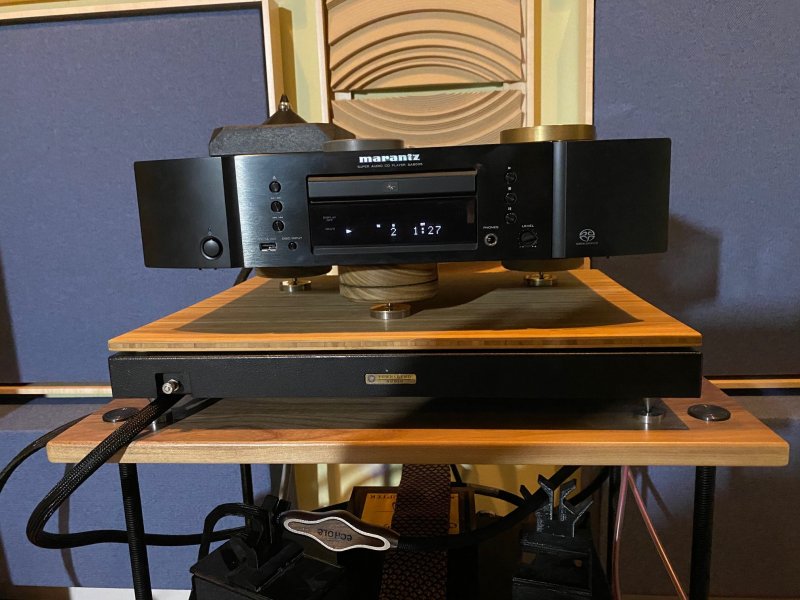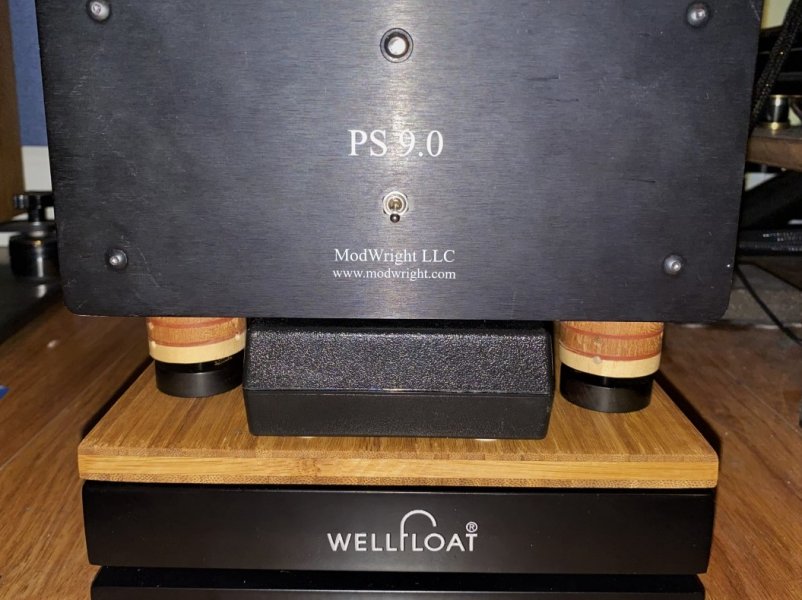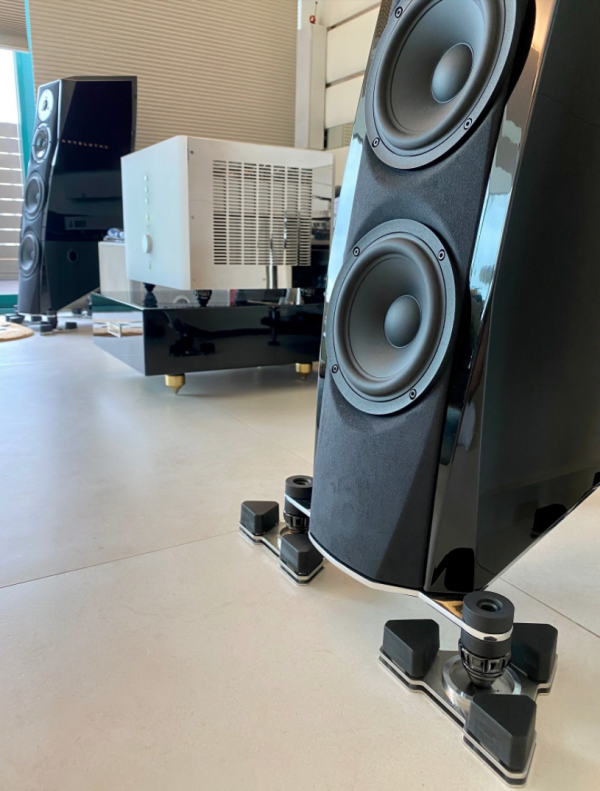I Recently purchased a Timeless Audio Unlimited Rack, which along with being extremely well made and aesthetically beautiful, certainly to my ears made a notable sonic difference with my components for the better, mainly better articulation and a more natural tonality to instruments, now I am pondering whether its beneficial or not to get a set of Townshend Audio "Corner" Seismic Pods to put under the feet of the rack, I mentioned this to the owner of the company and this is what he said (translated by google from Portuguese) :
TIMELESS AUDIO
"But be careful with these accessories they can work well or not (worth some testing before) isolation is not always better than coupling Mainly when the rack works with the principle of coupling to dissipate vibration and energy, I don't know if you noticed but the Rack uses spheres Zirconia (these white ones) not by chance, but precisely coupled to the floor in order to dissipate the vibration coming from the air and from the equipment itself. This vibration is discharged onto the floor. the floor even transmitting vibration
.. normally it is more stable than any other surface. We have already tested some types of decoupling and we still prefer the rack attached to the floor. But it's worth the test if you can tell me the result"
My floor is comprised of Porcelain tiles on Cement.
Alternatively I have also been thinking of using sets of Isolation feet on the individual shelfs of the rack for each component, after a decent amount of research I have concluded that "Finite Elements Cerball Universal" feet appear to offer great value and have been very well received, of course Center Stage2 are for many the Rolls Royce / Patek Phillipe of the Isolation world but beyond what i want to spend, and there are other interesting newcomers such as "Revopods" and "Hifistay" feet, which appear to be well thought out and designed and gaining traction in the audiophile world, but to reiterate, I want to keep it simple and cost effective.
Curious to hear peoples experiences and what they choose to do and use and please if possible a brief explantion of why and the difference it made for them.
Thanks and Cheers to all.
TIMELESS AUDIO
"But be careful with these accessories they can work well or not (worth some testing before) isolation is not always better than coupling Mainly when the rack works with the principle of coupling to dissipate vibration and energy, I don't know if you noticed but the Rack uses spheres Zirconia (these white ones) not by chance, but precisely coupled to the floor in order to dissipate the vibration coming from the air and from the equipment itself. This vibration is discharged onto the floor. the floor even transmitting vibration
.. normally it is more stable than any other surface. We have already tested some types of decoupling and we still prefer the rack attached to the floor. But it's worth the test if you can tell me the result"
My floor is comprised of Porcelain tiles on Cement.
Alternatively I have also been thinking of using sets of Isolation feet on the individual shelfs of the rack for each component, after a decent amount of research I have concluded that "Finite Elements Cerball Universal" feet appear to offer great value and have been very well received, of course Center Stage2 are for many the Rolls Royce / Patek Phillipe of the Isolation world but beyond what i want to spend, and there are other interesting newcomers such as "Revopods" and "Hifistay" feet, which appear to be well thought out and designed and gaining traction in the audiophile world, but to reiterate, I want to keep it simple and cost effective.
Curious to hear peoples experiences and what they choose to do and use and please if possible a brief explantion of why and the difference it made for them.
Thanks and Cheers to all.





